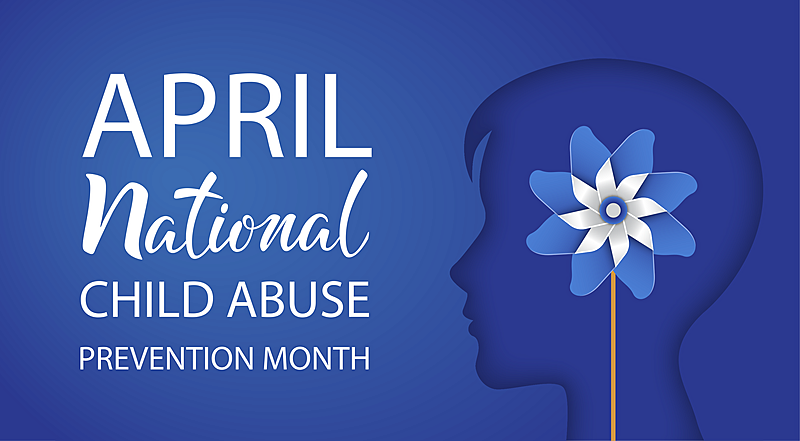
Two plus years of reduced activity and social isolation caused by COVID-19 has led many child welfare professionals to worry about an increase in child abuse. Concerns center on higher stress levels for families due to loss of employment, virtual learning, and the general fear of contracting the virus. We know economic and social stressors can place families in vulnerable situations that give rise to potential child abuse. Child welfare professionals worry the isolation has also created a scenario where children are unable to seek help at school and other community resources.
This is the month we turn our focus to the prevention of child abuse. Since we recognize April as National Child Abuse Prevention Month, let us look at the state of our country when it comes to child abuse and some of the underlying issues with which we grapple.
Resource: https://www.childwelfare.gov/topics/preventing/preventionmonth/
Scope of the Problem
In the Federal Fiscal Year (FFY) 2020, approximately 3.14 million children experienced an investigation or alternative response to a report of child abuse (US Department of Health and Human Services, 2022). To put this in perspective, reporting states had a combined child population of just over 73.3 million children with 618,399 of the reported cases indicated for child victimization. This gives us a rate of 9 in every 1,000 children experiencing an indicated incident of child abuse in FFY 2020. The CDC estimates that at least 1 in 7 US children experienced abuse or neglect within the last year. The CDC also reported that 61% of adults had self-reported exposure to four or more adverse childhood experiences (ACEs) before turning 18 years of age. This statistic tells us the scope of child abuse is much larger than what is detectable and known. How much of the violence and family dissolution in America is linked to childhood abuse victims as they become adults?
While a 9 in 1,000 indicated rate may not sound incredibly disturbing, we must remember that not every incident of alleged abuse is reported and not every case of abuse can be proven. After 30 years of child welfare practice, I have seen enough alleged abusers be cleared from lack of evidence to believe children are being woefully failed. In a system where a child may be the only witness to abuse, it makes sense that abusers will go unpunished at times. Children often need years to speak up about abuse with many never feeling strong enough. Children who have been abused may wall off memories of the abuse for years as a coping mechanism to survive the emotional pain of abuse. And one of the most troubling aspects is that abuse investigations can often become a “child says, adult says” battle where children are at a disadvantage.
Resource: https://www.childwelfare.gov/topics/preventing/preventionmonth/about/child-maltreatment-data/
Protecting Children
Protecting children must be a focus for all of us. Children that experience more ACEs grow up with a greater risk of poor adult outcomes. The experiences include verbal abuse and physical abuses, as well as devastating forms of sexual abuse. Potential outcomes may be unstable relationships, unemployment/underemployment, substance abuse, and domestic violence. Pornography and child trafficking present an especially worrisome set of long-term consequences. Younger and younger children are swept up in the pornography industry. Their bodies are displayed for on-demand consumption by adults with no moral compass. Further, the link between child trafficking and pornography is well-documented. Many children barely in their teens are being prostituted both physically and digitally simply to generate revenue for their abusers. The valuation of life is reduced to a digital stream that dehumanizes the victims and separates abusers and viewers from seeing the victims as real people. Exploited children face a set of long-term outcomes that are especially bleak, which include long-term health problems, difficulty developing stable, healthy relationships and high rates of substance abuse are among the most prevalent results.
We Can All Do Something
Ensuring our children grow up safe from abuse is everyone’s responsibility. We cannot afford to live in a society where adults turn a blind eye, because they “don’t want to get involved.” The cost of inaction and apathy is simply too great upon the future of American society. The societal and economic burden of caring for traumatized children is astonishingly high when considered in dollars. The CDC estimates a 10% reduction in the number of ACEs in North America would save $56 billion per year!
Supporting struggling families is one of the surest ways to reduce the incidence of child abuse. Families need access to resources such as daycare and transportation so parents can work and develop economic stability. Local, state, and federal policy development that spends more on the security and development of the family than on partisan pet projects is a clear path to improved outcomes for children. We need professionals in the human services to advocate for family-friendly policies at each level of government.
Giving our time is as important as our work in the human services field. Human service professionals are uniquely equipped to volunteer time in community programs that support child abuse prevention. We can help improve efficiencies and expertise to small nonprofits that combat child abuse. As people helpers, let’s lead the way for child abuse prevention.

